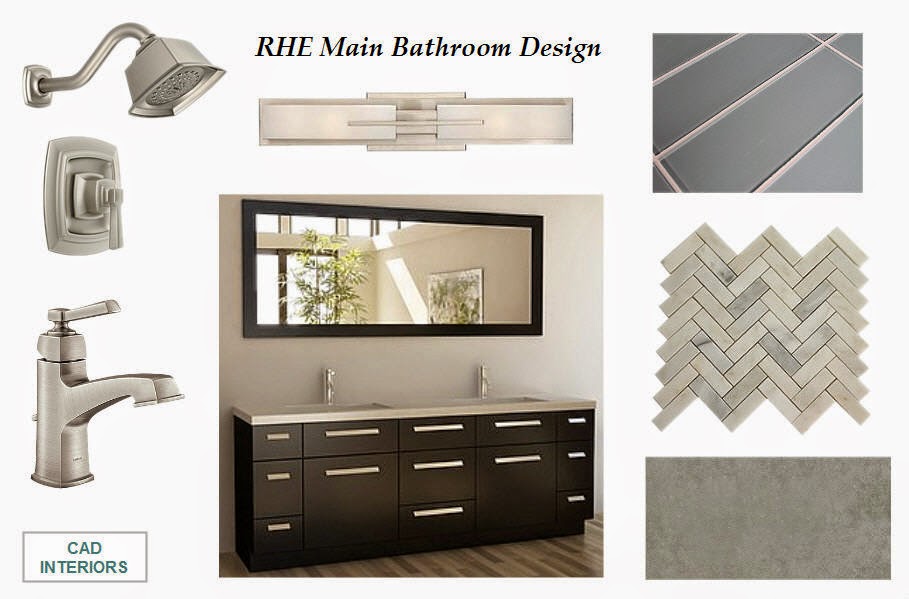Does budget hold you back from creating a beautiful environment for yourself? Do you feel paralyzed (by budget or otherwise) when pulling a space together? Well, you're not alone.
Many people face budgetary constraints when it comes to designing their interiors. But it should NOT prevent you from creating a home environment that you crave and deserve. After all, home is where you begin and end each day. Make it yours.
Here are some ways to approach a room design on a limited (or any) budget:
1. Acknowledge the fact that there may never be the "right" time for a room makeover. We all have life priorities that will always take precedence. Nonetheless, it is important to give yourself a soothing environment in at least one space in your home. It can go a long way towards your comfort and well-being.
2. Create a design plan assuming budget wasn't an issue. Sound counter-intuitive? Well, this is more about helping you get your creative juices flowing. Envision how you want your space to look, feel, and function, then start finding pieces that fit your vision. Once you see everything together on screen or paper, you can mix, match, and ultimately, edit/streamline. How many times have you purchased something, only to realize it doesn't work with the other room elements? See how everything visually looks together first!
3. Prioritize what you really want/need in your design plan, then establish a REALISTIC budget. Allow yourself to splurge on some of the "must haves" in your design plan, and then dedicate the funds towards it. Tailor the rest of the design elements around the remaining budget. This could entail sourcing budget-friendly alternatives to the "lesser priority" items. I typically suggest investing in quality "bigger ticket" items, like sofas or dining tables, since those aren't easily swapped out. Compliment your investment pieces with more affordable accent pieces and decorative accessories.
In our main bathroom remodel, we decided to make the tile work the priority and focal point. A significant portion of the budget was allocated towards tile and the related labor to install it. Alternatively, I sourced budget-friendly options for the vanity, fixtures, and lighting.
Herringbone Marble Mosaic Feature Wall // Main Bathroom Reveal Part One // Main Bathroom Reveal Part Two
4. Take measurements and create a floor plan. Measurements (of the space and furnishings) are critical to ensure that your floor plan can accommodate what you intend to incorporate into the space. Consider scale and proportion too. There is no point in buying a sofa that's too bulky for the area... or getting a coffee table that will make your seating arrangement feel cramped... or purchasing an end table that isn't in scale with the adjacent chair... You get the idea. Factoring in all these considerations will help you save time and money in the long run.
5. Make purchases over time, and implement your design in stages. You don't need to buy everything all at once. Implement your design plan as your budget permits. I would recommend, however, not waiting on purchasing the less common items in your plan.
Because of ongoing renovations, I have to implement the general design plan for our family room in stages. It's okay for a room to evolve over time!
Because of ongoing renovations, I have to implement the general design plan for our family room in stages. It's okay for a room to evolve over time!
6. Don't limit your shopping to retail stores. Shop flea markets, thrift stores, online marketplaces (Ebay, Etsy, etc.), estate sales, etc. Visit your local shops too. Rooms that are dynamic and well-crafted look collected and layered, rather than straight out of a Pottery Barn or West Elm catalog. CAD Design Tip: Thrift stores in "higher end" neighborhoods may offer beautiful treasures at discounted prices.
7. Shop your home first for furniture or decorative accessories. Furnishings and accessories can take on new light when moved from one space to another.
8. Don't underestimate what you can DIY or transform. Don't overlook something just because it's the wrong color, needs to be spruced up, etc. Look at proportion, scale, shape/lines, etc., especially when it comes to second-hand furniture. Paint can also do wonders for instantly transforming a room or updating something - and it's an easy DIY!
9. Get creative. Here are a few of my previous posts on budget decorating:
Sharing with: Home Stories A to Z









Great tips.
ReplyDeleteI will start doing no2. Outside The Sims (the game), I never designed with an budget-is-not-an-issue mindset. Now that you mentioned it, seems like the way to go!
It's fun to "dream design"! I'm not familiar with the game you mentioned... will check it out. :)
DeleteThese are such great suggestions - and I need to hear them as I move at snail's pace transitioning from our old house decor to something fresh and different for this house. It takes time (#5) and in my case, lots of DIYs (#8) to get the desired end result but it's worth it. Just takes a whole lotta patience!!
ReplyDeleteOh, I hear you with the patience factor! You are so multi-faceted. I know you're going to create wonderful "new" spaces in your home with your mad DIY skills and creativity. Loving following you in the process... :)
Delete